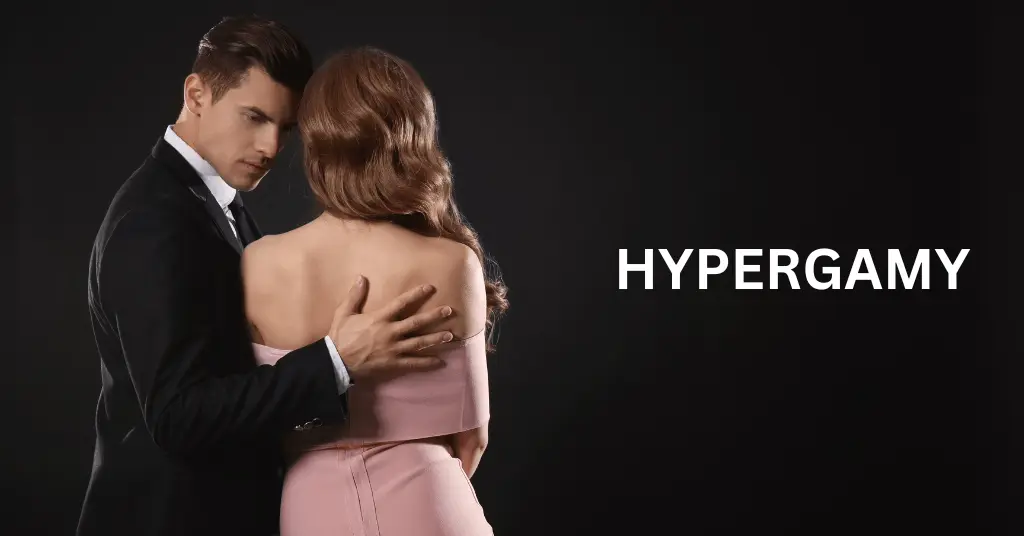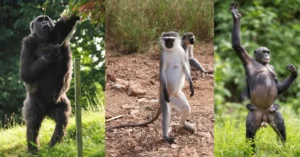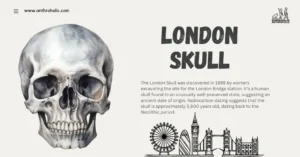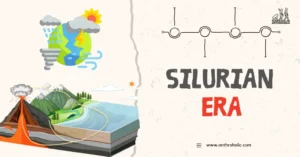AI Answer Evaluation Platform Live Now. Try Free Answer Evaluation Now
Hypergamy
Hypergamy is the cultural or social practice of marrying a person with a higher socio-economic status. Although traditionally attributed to women, a vast range of studies have addressed the practice as it occurs in contemporary society. The selection of mates from a superior economic or educational background is not confined to marital relationships but also encountered within the current scenario of dating.

The practice is prevalent in India, as a part of the marriage system called Anuloma which has been advocated in the Sanskrit text – Manusmriti from the 3rd century CE.
Sociologically speaking, the criteria for ‘marrying up’ was associated with one’s ascribed status (caste) and education. However, an increasing number of women employees in different fields has masked the latter and caste-based mate selection can predominantly be observed in peculiar pockets of conventional societies.
Origin
The history and prevalence of hypergamy has been explained by the position of women in traditional society. Lack of legal access, inadequate provision of education and significantly less means of financial welfare contributed to women growing dependent on a ‘male agency’, so to speak, to mobilise in the social ladder of livelihood. T. Mohanadoss has famously described anuloma in India as emerging from the assumption that men are superior to women.[1] Though the origin of the practice is unclear, scholars have proposed various perspectives. These vary from ‘invading Aryans looking to marry indigenous tribal women’ to the conception of the kanyadan (gifting of virgin) system in ancient India.[2] Fundamentally, the practice is an act of exchange where economic resources (stridhan) of the low status bride-giver family could be given in return for status mobility.
Historical Implications
Due to its essence in the caste system, early studies of the practice pertain to socio-cultural implications. Anthropologist David Pocock has pointed out the correlation between kanyadan and dowry practice. Similarly, Irawati Karve has also highlighted the social disparity in the custom of bride-price.[3] These social implications arise from the inability of hypergamy to stabilise the framework of family institution, marriage practice and their religious undertones against vastly disproportionate demographic data. The practice of marrying up, in its caste-based criteria, posits the issue of accommodating women of higher status, who by and large, will have a deficit of available male partners. While the lower groups will have inadequate women for their marriageable male members.
Current Scenario
Asymmetry
Recent experimental surveys and studies have confirmed the asymmetrical reality of partnering preferences. Hypergamy is the result of this as men give more priority to physical attractiveness than women, who tend to focus on intellect and earnings potential.[4] This further validates the idea that historical culture-based disparities have been superseded by criteria existing in the face of current society viz. education and salary.
Role Reversal
In developed countries, a reversal of educational achievement has been observed as women have increased access to learning and choose to pursue higher levels of education than most men. Hence, women ‘marry down’ in this context. Interestingly, such a data set of women, deemed ‘alpha females’, also tend to choose men with higher income. This has been widely studied in a comparative analysis made in 2016 which utilised data from the 1980 census and other 2008 demographic surveys.[5]
Across the Spectrum
In Sub-Saharan Africa on the other hand, the educational gap between men and women is predicted to stabilise into educational homogamy. The region currently experiences an extreme spectrum of educational hypergamy and hypogamy.[6]
There is an undeniable correlation between marrying up or down in complex socio-economic scenarios. For example, a paper from 2007 has implied that industrialised society such as that of Europe witnesses a steady decrease in educational homogamy.[7] Which suggests that hypergamy can swing either way, in terms of gender. But more importantly the advent of this practice is now related to the aggregate of social status, educational access/qualification, income range and its association with subjective economic conditions.
Status Dimensions
A few recent studies have drawn more toward status dimensions as they are distributed between men and women. This has been used to determine the same paradigms within households (status of husband and wife)[8]. Incidentally, a study made on a small data sample has suggested that couples who are educationally homogamous tend to have together a higher income as well as occupational prestige. However, similar studies propose that men, no matter the educational achievement, are most likely to out-earn women due to higher wages if not better physical advantage.
Therefore, marrying up or down is not currently a cultural phenomenon. Although, one can’t deny that culture does contribute to how educational and economic scenarios pan out. Bearing all these facets in mind, one can assert that the criteria for hypergamy is a mixed bag that can only be elaborated through demographic perspectives.
Public Perception
Gender-egalitarian attitudes have been on the rise lately. As previously established, educational hypergamy has replaced hypogamy in various parts of the world. More than 35% of men are marrying up against the 28% of hypergamous men. Additionally, a recent paper has found that men supporting gender-egalitarianism are more likely to marry women with better edcuation and salary.[9] This reflects the balancing of power-relationships in the marriage institution.
The data strongly suggests that as long as such practices are exonerated from the clutches of religious traditions,social perceptions show greater acceptance toward the recently introduced criteria.
Types of Hypergamy
In addition to educational and economic hypergamy, the 1995 article by T. Mohanadoss mentions other forms –
- Intra and inter-caste : The former being accepted over the latter. Moreover, crediting the practice of marrying up with integrating the various layers within the caste system.
- Obligatory and Voluntary : van Der Veen’s description of exogamous Rajputs in the obligatory category has staunchly opposed the practice.
- Free Hypergamy : Found among the Patidars. This practice is exempt from any strict regulations.
Other less common types include directional hypergamies and ‘with reservations’ (Nayar marriage)[1]
Negative Impacts
Scholars like Mohanadoss have further elucidated the historical self-contradictions of the practice. The practice of endogamy, which survived to ‘purify’ the clan or group, becomes obsolete due to hypergamous unions. Additionally, kanyadan resulted in the practice of anuloma which consequently introduced bride-price. This placed immense strain on the lower cohorts who also had to pay dowry to assure a man for their daughters.
Anthropologist van der Veen has also blamed the practice for indirectly causing female infanticides and a distaste for female births due to the nature of kanyadan which upheld the notion of the ‘virgin gift’.[10]
The closing of the gender-education gap and increase in salary of women has put an additional burden on the function of men in a family setting. Against this scenario,marriage currently sits at 6.9 marriages per 1000 people (USA) which is a 4% drop from the preceding four decades.[11] Coupled with rising inflation rates and increased cost of living, it is estimated that over 50% of men within the age bracket of 18-29 choose to remain single or avoid marrying. Moreover, data and surveys from women show that the increasing professional responsibilites and educational priorities have shown a decline in the desire to have children. If such trends persist, we can expect a steady rise in the mid-range category of unmarried individuals while further restricting the practice of hypergamy to the two far ends of the socio-economic spectrum.
Conclusion
The practice has been introduced and its bifurcation into historical culture-based and modern socio-economic categories has been mentioned. The interrelationship between hypergamy and other educational, status, occupational and power dimensions are crucial in establishing the nature of current scenarios. The negative impacts of the practice not only speak for the social psychological aspects of current society but also represent public perception about longstanding cultural taboos, stigmas and atrocities in the face of modern laws and policies.
See Also
References
[1] T. Mohanadoss (1995). Hypergamy and Its Inherent Contradictions. Anthropos, 90(4 -6), 558–563. doi:10.2307/40463200
[2] Parry, J.P. (1979). Caste and Kinship in Kangra (1st ed.). Routledge. https://doi.org/10.4324/9781315017846
[3] Karve, I. (1990). Kinship Organization in India. Munshiram Manoharlal.
[4] AlmÃ¥s, Ingvild; Kotsadam, Andreas; Moen, Espen R.; Røed, Knut (2020). The Economics of Hypergamy. Journal of Human Resources, (), 1219-10604R1–. doi:10.3368/jhr.58.3.1219-10604R1
[5] Qian, Y. (2017), Gender Asymmetry in Educational and Income Assortative Marriage. Fam Relat, 79: 318-336. https://doi.org/10.1111/jomf.12372
[6] Bandyopadhyay, S, Green, E. Explaining inter-ethnic marriage in Sub-Saharan Africa. J. Int. Dev. 2021; 33: 627– 643. https://doi.org/10.1002/jid.3535
[7] Domański, Henryk; Przybysz, Dariusz (2007). EDUCATIONAL HOMOGAMY IN 22 EUROPEAN COUNTRIES. European Societies, 9(4), 495–526. doi:10.1080/14616690701314119
[8] Margarita Chudnovskaya , Ridhi Kashyap, Is the End of Educational Hypergamy the End of Status Hypergamy? Evidence from Sweden, European Sociological Review, Volume 36, Issue 3, June 2020, Pages 351–365, https://doi.org/10.1093/esr/jcz065
[9] Trimarchi A. Gender-Egalitarian Attitudes and Assortative Mating by Age and Education. Eur J Popul. 2022 Apr 4;38(3):429-456. doi: 10.1007/s10680-022-09607-6. PMID: 35966361; PMCID: PMC9363550.
[10] Van der Veen, Klaas W. 1972 I Give Thee My Daughter. Assen: Van Gorcum and Company
[11] https://ourworldindata.org/grapher/marriage-rate-per-1000-inhabitants?facet=entity




